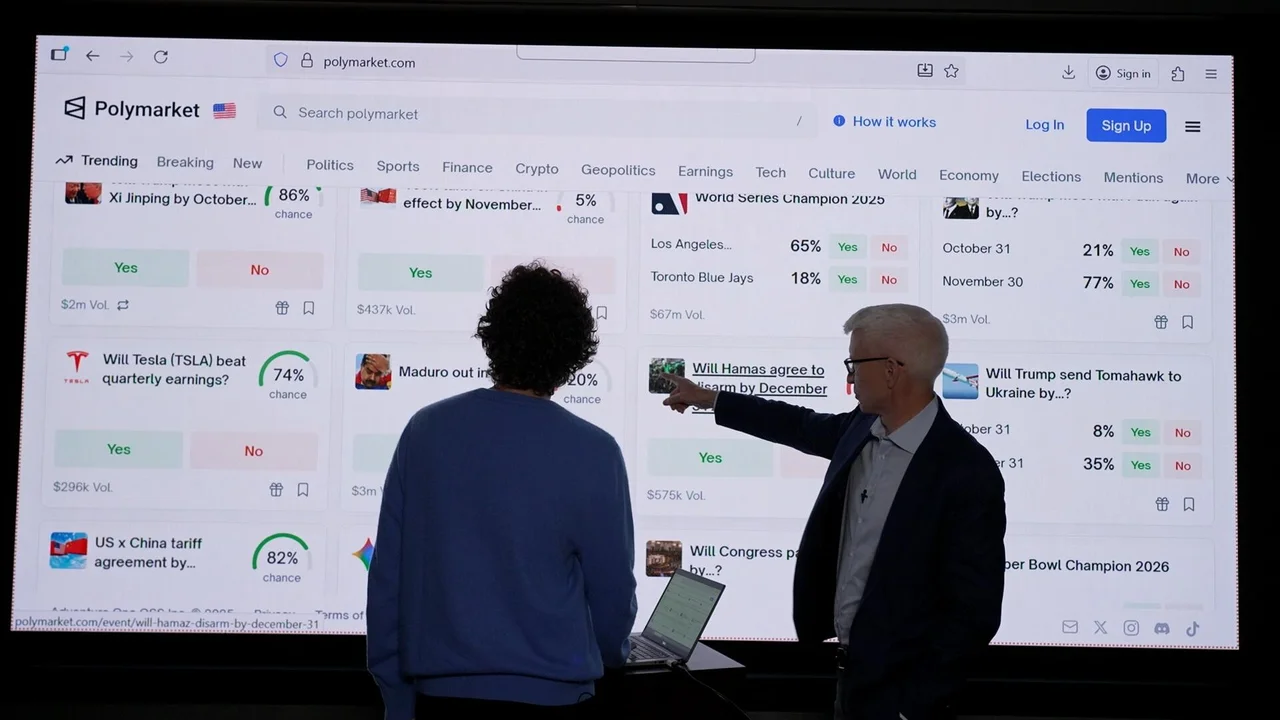Do More With Less; The Upside of Building With A Tight Budget

Ever heard the phrase “constraints breed creativity”? It’s especially true in manufacturing. Conventional wisdom says more funding equals more innovation, but the truth is often the opposite. A lack of funding can actually fuel leaner, smarter innovation, especially when teams are forced to focus on doing more with less.
Let’s explore why financial constraints can push manufacturers toward efficiency, agility, and creativity, and how you can harness that energy in your own operations.
Why a Lack of Funding Isn’t Always a Bad Thing
Most companies see limited funding as a roadblock: fewer machines, fewer experiments, slower rollout. But when you can’t throw money at problems, you must rethink processes, reduce waste, and simplify. These are the very essence of lean manufacturing.
When budgets are abundant, it’s easy to add complexity: more tools, more steps, more waste. But constraints force focus. They push leaders to ask: What must this process do? What’s unnecessary? What can we eliminate? That’s how smarter workflows are born.
Scarcity also democratizes innovation. Everyone, from operators to managers, must contribute to problem-solving. You’re not just buying new machines; you’re redesigning how work gets done. Research on lean innovation shows that teams with limited resources tend to focus on high-impact initiatives, use minimum viable products, and iterate faster.
In fact, studies on frugal innovation - the art of doing more with less - reveal that resource constraints can actually improve creativity and focus. When you can’t hide behind big budgets, you build agility instead.
And in manufacturing, that’s a superpower. The Toyota Production System (TPS), the foundation of lean manufacturing, was developed not through abundance but through necessity. Post-war Toyota lacked capital and resources, so it learned to eliminate waste, empower workers, and perfect efficiency. That scarcity became its strategic advantage.
What Lean Manufacturing Looks Like Under Funding Constraints
So what does it look like when innovation grows out of scarcity?
At its core, lean manufacturing, inspired by Toyota’s approach, focuses on eliminating seven forms of waste: overproduction, waiting, excess motion, transport, inventory, extra processing, and defects. Under tight budgets, those inefficiencies become too costly to ignore.
Can you reduce idle inventory so capital isn’t tied up? Can you streamline workflows so fewer staff hours are needed? Can you repurpose or modify equipment rather than buy new? Each decision tightens operations while freeing resources for innovation.
Often, the best ideas emerge not from new machines but from rethinking existing assets. Teams learn to repurpose tools, cross-train employees, and modularize workstations for flexibility. When you can’t afford redundancy, you optimize for versatility.
Limited funding also nudges you toward smaller, faster experiments. Instead of massive rollouts, you pilot process improvements in short cycles, a “minimum viable production” model. This approach mirrors the lean startup philosophy: test quickly, learn faster, and scale what works.
In cash-rich environments, innovation is often siloed in an R&D department. In lean ones, innovation becomes everyone’s job, from the assembly line to procurement. That collective engagement strengthens culture and accelerates continuous improvement.
Finally, limited funding promotes smarter supply chains. Many companies shift toward just-in-time (JIT) delivery, tighter supplier relationships, and lean inventory. But lean supply must be balanced with resilience, too little buffer can leave operations vulnerable to disruptions, as seen during COVID-era shortages.
Why Constraints Drive Innovation
So how exactly does lack of funding lead to better innovation, not just efficiency?
When budgets shrink, you’re forced to distinguish between “nice-to-have” and “must-have” improvements. Every decision must deliver measurable value. That focus drives innovation that is purposeful, cost-effective, and customer-centric.
This is the essence of frugal innovation, redesigning processes and products to deliver value with fewer resources. Instead of asking, “What can we add?” you ask, “What can we remove without hurting performance?” That inversion is powerful.
With smaller budgets, teams are also more open to experimentation. You can’t afford multi-million-dollar bets, so you make smaller, iterative ones, reducing risk and learning faster. Research from MIT Sloan highlights that resource constraints often accelerate adaptability and creativity, two key ingredients of sustained innovation.
Even major corporations have learned this. GE’s Frugal Innovation Program, for instance, was inspired by startups in emerging markets that created low-cost medical devices by simplifying core functionality. These lessons have reshaped how global manufacturers think about R&D efficiency.
And when lean manufacturing eliminates waste, it frees up internal capital. That extra efficiency becomes self-funding for innovation. Tight budgets → lean processes → new capacity → innovation flywheel.
Real-World Examples
Take a small metal fabrication shop. Capital is scarce; automation is out of reach. Instead, they train each operator to handle multiple stations. They redesign their floor layout to minimize movement and integrate quick-change fixtures on existing machines. By applying Kaizen principles — continuous, small improvements — they cut lead time by 30% and improve output without spending a dollar on new machinery.
Or consider a mid-sized electronics manufacturer navigating a post-pandemic cash crunch. Instead of investing in new robotics, they retrofit older ones with sensors to enable basic predictive maintenance. This low-cost adaptation reduces downtime and extends asset life — a perfect example of innovation born from necessity.
Even global giants like Toyota, Bosch, and Siemens maintain “constrained innovation cells” where small teams work with intentionally limited budgets. According to Harvard Business Review, these controlled constraints often produce more original ideas than well-funded R&D units.
The Risks and How to Avoid Them
Of course, not every funding constraint leads to innovation. Poorly managed scarcity can stifle creativity or cut corners. Here’s how to avoid that trap.
First, remember that lean is not cheap. If you only cut costs without redesigning for value, you risk demoralizing teams and hurting quality. The goal is to simplify intelligently, not to starve operations.
Second, transformation still requires some investment in training, leadership, and process design. Studies in Sustainability (MDPI) found that while lean can thrive under low funding, lack of initial investment often prevents organizations from fully embedding continuous improvement.
Third, guard against tunnel vision. If you treat lean purely as cost-cutting, you’ll erode innovation and customer value. True lean innovation stays anchored to customer outcomes: higher quality, shorter lead times, better adaptability.
Finally, beware of supply chain fragility. Just-in-time models can save money but expose you to shocks. Balance lean efficiency with resilience by building strong supplier relationships and small buffers.
A Founder’s Playbook: Turning Constraints into Catalysts
If you’re a founder, operations manager, or manufacturing lead working under tight budgets, here’s how to turn limitation into leverage:
- Reframe the narrative. Scarcity isn’t failure; it’s a creative challenge. Communicate that your goal is to be smarter, faster, leaner, not simply cheaper.
- Map your value streams. Use tools like Value Stream Mapping to identify bottlenecks and waste. Prioritize high-impact, low-cost improvements.
- Empower your people. Create low-cost learning loops: internal mentoring, quick Kaizen sessions, and recognition for practical ideas. Frontline insight is your most underused innovation engine.
- Experiment small, scale fast. Pilot new layouts, maintenance methods, or workflows before full rollout. Measure, learn, iterate.
- Repurpose, don’t replace. Adapt equipment, cross-train workers, modularize processes. Optimize before you automate.
- Stay customer-focused. Use constraint as a lens for value, faster delivery, fewer defects, more responsiveness.
- Measure and celebrate. Track metrics like lead time, defect rate, and throughput. Celebrate small wins; culture compounds.
These aren’t survival tactics. They’re the habits of manufacturers who thrive regardless of funding cycles.
Final Thought
In an age where venture capital and automation often dominate the innovation narrative, it’s worth remembering that Toyota, Honda, and countless successful startups all began under severe resource constraints. Their advantage wasn’t money, it was mindset.
When you strip away excess, what’s left is focus. Focus leads to clarity, clarity leads to creativity, and creativity, not capital, is the true fuel of innovation.
So the next time you feel limited by funding, ask yourself: What would we build if we had half the budget?
You might just uncover your most efficient, resilient, and innovative version yet.
Read - How Solo Founders Are Redefining Startup Success

square.jpg)










